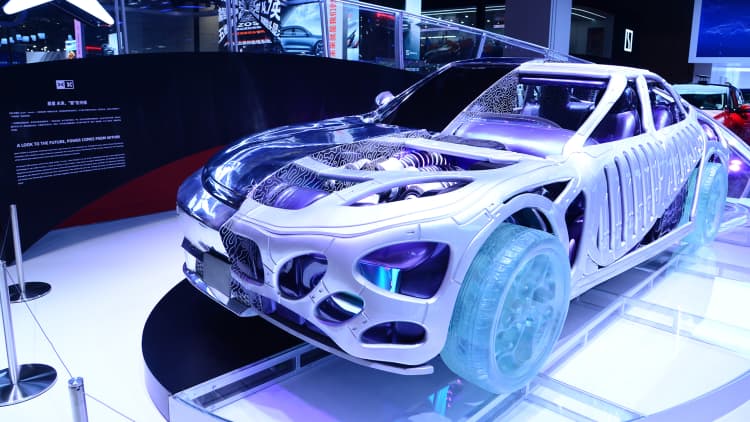How a shortage of workers could put the brakes on the shift to EVs
A mechanic working on an electric car at a garage in Carquefou, France, in November 2022. The EU is looking to increase the number of EVs on its roads in the coming years.
Loic Venance | AFP | Getty Images
From seatbelts to airbags and radios to parking sensors, today’s cars are packed with innovations that have transformed the vehicles we drive.
Thanks to growing concerns about emissions from road-based transportation, several big economies are gearing up for another huge change: the mass rollout of electric vehicles.
The U.K., for instance, wants to stop the sale of new diesel and gasoline cars and vans by 2030 and will require, from 2035, all new cars and vans to have zero tailpipe emissions.
The European Union, which the U.K. left on Jan. 31, 2020, is pursuing similar targets. And over in the U.S., California — America’s most populous state — is banning the sale of new gasoline-powered vehicles by 2035.
The above goals above are years away but, bit by bit, changes are already being seen on the ground.
Take the U.K., for example. According to the Society of Motor Manufacturers and Traders, 2022 saw factories there produce 234,066 battery electric, plug-in hybrid and hybrid electric vehicles, a record number that accounted for 30.2% of total car production.
“Total BEV production rose 4.8%, with hybrid volumes up 4.3%, and boosting output of these vehicles will be critical in the attainment of net zero, for both the UK and major overseas markets,” the industry body said.
As the number of EVs on our roads increases, a workforce with the knowledge to fix and properly maintain them will be needed.
There are concerns, however, that a skills gap may emerge in the near future, creating a big headache for both the automotive sector and drivers.
In January, the Institute of the Motor Industry — a professional association for those employed in the sector — said roughly 16% of technicians in the U.K. had the relevant qualifications to work on electrified vehicles.
“The IMI predicts that the number of IMI TechSafe qualified technicians required to work with electric vehicles by 2030 is 77,000, increasing to 89,000 by 2032,” it said.
“Aligned to Auto Trader Insight predictions, this suggests the skills gap — when there won’t be enough technicians to service the electrified vehicle parc — will appear in 2029,” it added. “Parc” is a term the SMMT says represents the “total stock of cars on the roads.”
The size of this skills gap, according to the IMI’s January 2023 forecast, will leap from 700 in 2029 to 13,100 in 2032.

But what would such a scenario actually look like? Steve Nash, the IMI’s CEO, told CNBC there were “a couple of potential issues.”
“One is just the convenience issue of people having to go a lot further than they would want to go to find somebody who’s appropriately qualified to do the work,” he said.
“The other one is potentially cost because, of course, the more demand and the less people…
Read More: How a shortage of workers could put the brakes on the shift to EVs
